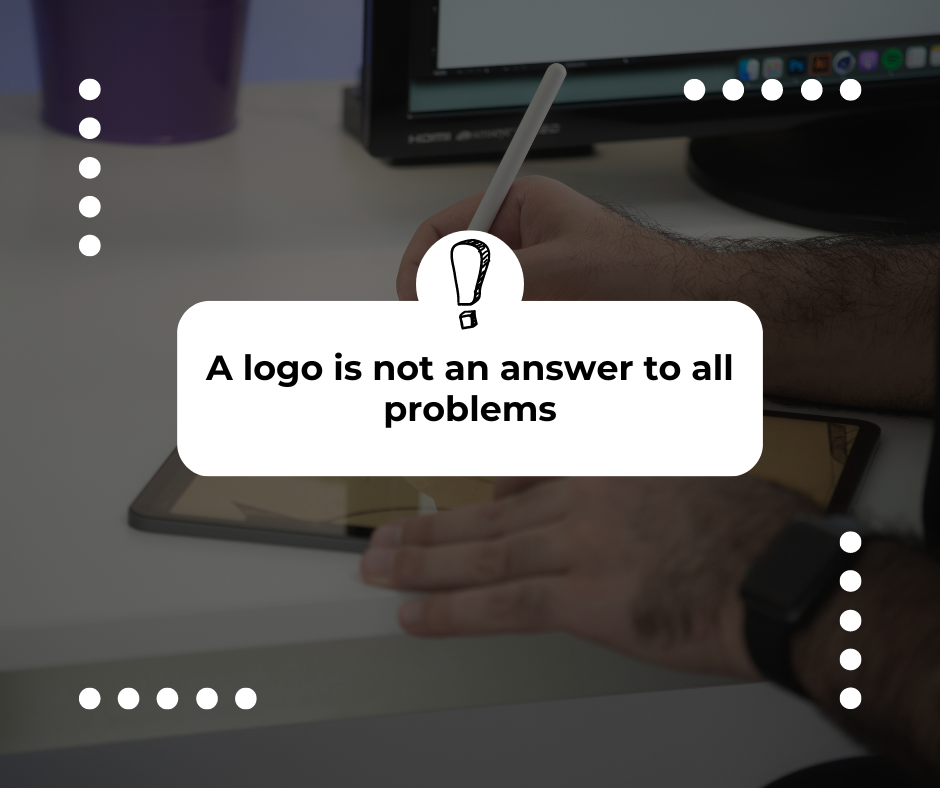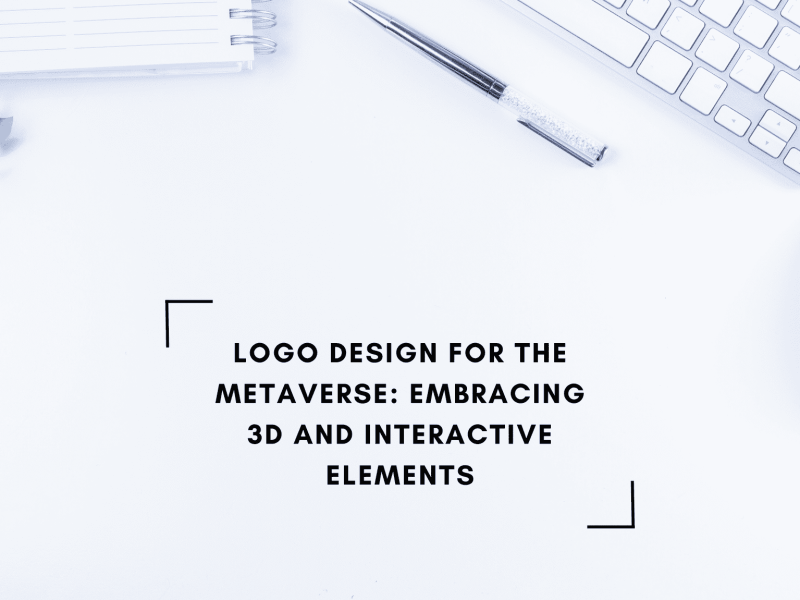A logo is not an answer to all problems
Unquestionably, logos are a crucial component of branding since they act as a visible representation of a business or organization. They frequently serve as consumers’ initial point of contact with a brand and have the power to leave a lasting impression. However, it’s critical to realize that a logo is not a panacea for all branding issues on its own. In this post, we’ll look at the constraints of a logo and the wider, more general facets of branding that fall outside of its purview.
Introduction
Many individuals prefer to just mention logos when talking about branding. Although logos are unquestionably important, it is important to understand that they are only one aspect of branding. A logo by itself cannot adequately convey all the nuances of a brand or all the market issues that companies encounter.
The Purpose of a Logo
Let’s first examine the limits of logos before moving on to discuss their use. A brand’s logo acts as a visual identifier, making it easier for customers to recognize and distinguish it from rivals. It serves as a representation of reliability, excellence, and consistency and aids in building a positive perception of the brand among customers.
The Role of a Logo in Branding
Although logos are crucial, they should be seen as a component of a larger branding plan. These are some of the main roles that a logo plays in the branding process:
- Building brand recognition
The ability of people to recognize and recall a brand is increased by a well-designed logo. It turns into a symbol that prompts memories of the brand’s goods, services, and principles.
- Conveying brand values and personality
A brand’s personality, positioning, and basic beliefs may all be expressed through a logo. A logo may create feelings and convey the essence of a company by using carefully chosen colors, typography, and visual components.
- Establishing brand trust
Consumer trust may be increased and credibility established with the aid of a properly designed logo. A well-designed logo communicates to consumers that a company is serious about its operations, which fosters greater customer trust and loyalty.
Limitations of a Logo
While logos offer advantages, it is important to recognize their limits as well. It’s crucial to recognize that a logo cannot solve every branding issue. Here are a few restrictions on logos:
- Lack of comprehensive brand communication
A logo by itself is insufficient to convey the depth and breadth of a brand’s products, principles, or differentiators. Although it is a visual depiction, it is unable to express complicated marketing messaging or deliver in-depth information.
- Dependence on other branding elements
To establish a consistent and powerful brand identity, logos must be used in conjunction with other branding components. To improve brand impression, they rely on consistent messages, visual design, and customer interactions. A logo might not be as effective without these auxiliary components.
- Inability to address all business challenges
While logos can help with brand identification and impression, they cannot address every issue a company can have. They don’t ensure increased revenue, devoted customers, or market leadership. A thorough branding plan that goes beyond a logo is necessary for business success.
The Importance of Brand Strategy
Businesses must have a strong brand strategy to get over a logo’s restrictions. To provide consistent messages and experiences across all touchpoints, a brand strategy aids in defining the direction and purpose of a brand. Here are some essential elements of a successful brand strategy:
- Understanding target audience
To develop a brand strategy, a thorough understanding of the target market is crucial. Businesses can build messaging and experiences that resonate with their target consumers by understanding their requirements, preferences, and goals.
- Defining brand positioning
Finding a distinctive value proposition and setting a company apart from rivals are both parts of brand positioning. It establishes how a brand wants to be viewed by consumers and directs the creation of messaging and visual components.
- Crafting brand messaging
The language, tone, and manner of communication with the target audience are all included in brand messaging. It should successfully communicate the brand’s narrative and services while being true to the brand’s core values and appealing to the target market.
Beyond the Logo: Holistic Branding Approach
Businesses need to have a comprehensive branding strategy that extends beyond the logo to establish a strong brand presence. Here are some crucial factors to take into account:
- Consistent visual identity
A logo should be used in conjunction with a unified visual identity that uses the same color palette, font, and design components. As a result, the brand experience is consistent across all marketing materials and touchpoints.
- Brand voice and tone
Creating a unique brand voice and tone aids in creating a unified identity throughout all communications. It affects how the brand communicates with its audience and supports the company’s positioning and values.
- Customer experience
An excellent customer experience cannot be produced by a logo alone. To create a memorable brand experience, businesses must concentrate on offering excellent goods, services, and interactions. Consistent and meaningful interactions are the key to retaining customers and gaining their business.
Maximizing the Impact of a Logo
A logo is important to a brand’s success even if it is not the end-all and be-all of branding. Businesses should take the following factors into account to optimize the effect of a logo:
- Integration with other marketing materials
Make sure the logo is smoothly incorporated into every piece of marketing collateral, including websites, products, ads, and social media. Consistency across platforms improves brand identification and boosts the prominence of the brand as a whole.
- Adaptation to different platforms
A logo should be versatile enough to work on both digital and print platforms. It should retain its visual impact across all channels and be distinguishable and legible at various sizes and resolutions.
- Evolving with the brand
A brand’s logo might need to be sometimes updated to reflect changes as it develops and grows. However, any changes must be made carefully to maintain brand awareness and avoid alienating current consumers.
Conclusion
While logos are crucial for branding, they are not a solution to every business issue. Businesses should have a comprehensive branding strategy that takes into account factors other than the logo. To build a strong brand presence and find long-term success, it is essential to have a solid brand strategy, consistent messaging, and excellent customer experiences.
FAQs
- Why is a logo important for a brand? A logo acts as a visual identity for a business, assisting with recognition, communicating brand values, and fostering customer trust.
- Can a logo alone communicate all aspects of a brand? No, a logo cannot fully express the intricacies of a brand on its own. It needs a thorough branding plan that covers the message, visual identity, and consumer experiences.
- What is the role of brand strategy in branding? The brand strategy outlines a brand’s positioning, purpose, and direction. Beyond the logo, it provides consistent messages and experiences and establishes a powerful brand presence.
- How can businesses maximize the impact of a logo? Businesses may include the logo in all marketing materials, modify it for various platforms, and reassess its usefulness as the brand changes over time.
- What are the limitations of a logo? The capacity of a logo to communicate a brand comprehensively, its dependency on other branding components, and its inability to handle all business difficulties are all limits.
–



